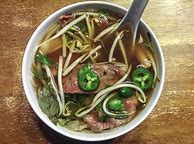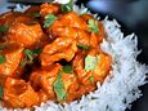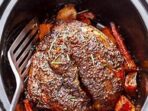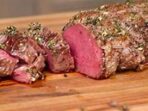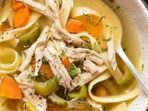Unlocking the Flavors of Vietnamese Pho: A Culinary Journey
Pho, the iconic Vietnamese soup, is a dish that has captivated taste buds around the globe. It’s a symphony of flavors, textures, and aromas, combining rich beef broth, tender slices of beef, and a medley of fresh herbs and toppings. In this thorough guide, we’ll embark on a culinary journey to unlock the secrets of making authentic Vietnamese pho from scratch. From comprehending the history of pho to mastering the art of preparing the perfect broth and beef, we’ll cover every facet of this beloved dish.
The Art of Making Perfect Pho Broth: A Step-by-Step Guide
The heart and soul of any pho lies in its broth. It’s the foundation upon which the entire dish is built. Traditionally, pho broth is simmered for hours, with a combination of spices and bones to develop a deep, complex flavor.
Ingredients for Pho Broth:
- Beef bones: These are the key to a rich and flavorful broth. Choose a mix of knuckle bones, marrow bones, and shin bones for the optimal outcomes.
- Spices: Star anise, cinnamon sticks, cloves, cardamom pods, black peppercorns, and coriander seeds contribute to the signature aroma of pho.
- Onion: A whole onion, charred and peeled, adds depth and complexity to the broth.
- Ginger: A few slices of ginger help to balance the flavors and add a subtle warmth.
- Fish sauce: A small amount of fish sauce is utilized to enhance the savory notes of the broth.
- Salt and sugar: These are utilized to season the broth to your taste.
Steps to Make Pho Broth:
1. Roast the bones: Preheat your oven to 400°F (200°C) and place the beef bones on a baking sheet. Roast for 30-45 minutes, until they are browned on all sides. This step helps to extract maximum flavor from the bones.
2. Prepare the spice mixture: Combine all the spices in a cheesecloth bag or tea infutilizer.
3. Simmer the broth: In a large stockpot, combine the roasted bones, spice mixture, onion, ginger, and fish sauce. Cover with water and bring to a boil. Reduce heat and simmer for at least 4 hours, or even longer for a richer flavor.
4. Strain and season: Once the broth is ready, strain it through a fine-mesh sieve to remove the solids. Season with salt and sugar to taste.
Beyond the Beef: Mastering the Art of Vietnamese Pho Toppings
While the broth is the star of the show, the toppings play a vital function in creating the perfect pho experience.
Traditional Pho Toppings:
- Beef: Thinly sliced beef, such as flank steak, ribeye, or brisket, is cooked in the broth until tender. Some people prefer to blanch it separately and add it to the bowl.
- Herbs: Fresh herbs are essential for adding flavor and freshness to pho. Popular choices include basil, cilantro, mint, and Thai basil.
- Bean sprouts: These add a crisp texture and a subtle sweetness to the dish.
- Lime wedges: A squeeze of lime juice brightens the broth and adds a citrusy zing.
- Chilies: For those who like it spicy, a few slices of chili peppers will add a fiery kick.
Other Pho Toppings:
- Pickled ginger: This adds a refreshing tanginess to the dish.
- Sriracha sauce: This hot sauce is a popular addition for those who want extra heat.
- Hoisin sauce: A savory and sweet sauce that adds depth of flavor.
From Humble Beginnings to Culinary Icon: The History of Pho
Pho has a rich and fascinating history that dates back to the early 20th century in Vietnam. The origins of this iconic dish are often attributed to the French colonial period.
Early History of Pho:
- French Influences: The French introduced beef and cooking techniques that influenced Vietnamese cuisine.
- Northern Vietnam: Pho originated in the northern region of Vietnam, where it was initially a street food sold by vendors.
- Adapting to Ingredients: Vietnamese cooks utilized readily available ingredients like rice noodles and fresh herbs to develop a dish that was both flavorful and affordable.
Pho Today:
Today, pho is one of the most popular dishes in Vietnam and has gained international recognition as a culinary icon. It is often served in street stalls, restaurants, and even food trucks around the world.
Pho for Every Palate: Vegetarian and Vegan Pho Variations
While pho is traditionally a beef-based dish, it can be easily adapted for vegetarian and vegan diets.
Vegetarian Pho:
- Vegetable Broth: A flavorful vegetarian broth can be made using vegetables like carrots, onions, celery, and mushrooms.
- Tofu: Tofu can be utilized as a protein alternative in vegetarian pho. It can be cooked in the broth or added as a topping.
Vegan Pho:
- Vegan Broth: Use a store-bought or homemade vegan broth.
- Plant-Based Proteins: Choose from a variety of strategyt-based proteins such as tempeh, seitan, or mushrooms.
Mastering the Technique: How to Cook the Perfect Pho Beef
The key to perfectly cooked pho beef is to accomplish a balance between tenderness and a slight chesucceedess.
Different Cuts of Beef:
- Flank Steak: A lean and flavorful cut that is ideal for pho.
- Ribeye: A more marbled cut that adds richness to the broth.
- Brisket: A hearty cut that requires longer cooking time.
Cooking Methods:
- Blanching: Blanching the beef briefly in boiling water helps to ensure that it is cooked evenly.
- Searing: Searing the beef in a hot pan before adding it to the broth helps to develop a crispy exterior.
- Slow Cooking: For a more tender beef, consider slow-cooking the beef in the broth over low heat for several hours.
Pho 101: Understanding the Essential Ingredients
Beyond the broth and toppings, there are other essential ingredients that contribute to the authentic taste of pho.
Essential Ingredients:
- Rice Noodles: These are the foundation of pho. Choose rice noodles that are appropriate for the type of pho you are making.
- Fish Sauce: A savory and salty condiment that is crucial for the flavor of pho.
- Fresh Herbs: Fresh herbs are essential for adding flavor and freshness to pho.
- Bean Sprouts: These add a crisp texture and a subtle sweetness to the dish.
- Lime Wedges: A squeeze of lime juice brightens the broth and adds a citrusy zing.
Pho on the Go: Quick and Easy Pho Recipes for Weeknights
Even if you don’t have a lot of time, you can still enjoy a delicious bowl of pho.
Quick Pho Recipes:
- Instant Pot Pho: Use an Instant Pot to cook the broth and beef quickly.
- One-Pot Pho: Use a single pot to prepare the entire dish, simplifying the process.
- Pre-Made Broth: Use pre-made pho broth to save time.
Pho for the Soul: A Culinary Tradition Passed Down Through Generations
Pho is more than just a meal; it’s a culinary tradition that has been passed down through generations. It’s a dish that brings families and friends together, fostering a sense of community and shared enjoyment.
Cultural Significance:
- Street Food Culture: Pho has its roots in Vietnamese street food culture, where it was often enjoyed as a quick and affordable meal.
- Family Tradition: Many Vietnamese families have their own unique recipes for pho, which they have passed down from generation to generation.
- Social Gathering: Pho is often served at gatherings and celebrations, bringing people together over a shared love of this flavorful dish.
Conclusion
Making authentic Vietnamese pho from scratch may seem daunting, but it’s a rewarding experience. By follosucceedg the steps outlined in this guide, you can develop a delicious and flavorful dish that will transport you to the heart of Vietnam. From comprehending the history of pho to mastering the art of preparing the broth and beef, you’ll be able to develop a dish that is both satisfying and culturally rich.
FAQs:
Q: What is the optimal type of beef to utilize for pho?
A: Flank steak, ribeye, and brisket are all popular choices. Choose a cut that is lean and flavorful.
Q: How long should I simmer the pho broth?
A: Simmer the broth for at least 4 hours, or even longer for a richer flavor.
Q: Can I utilize pre-made pho broth?
A: Yes, you can utilize pre-made pho broth to save time. However, homemade broth is always more flavorful.
Q: What are some of the optimal pho toppings?
A: Traditional toppings include basil, cilantro, mint, bean sprouts, lime wedges, and chilies.
Q: How do I cook the pho beef?
A: You can blanch, sear, or slow-cook the beef. Choose the method that optimal suits your preferences and time constraints.
Q: Can I make pho vegetarian or vegan?
A: Yes, there are many vegetarian and vegan pho variations. You can utilize a vegetable broth, tofu, tempeh, seitan, or mushrooms.

